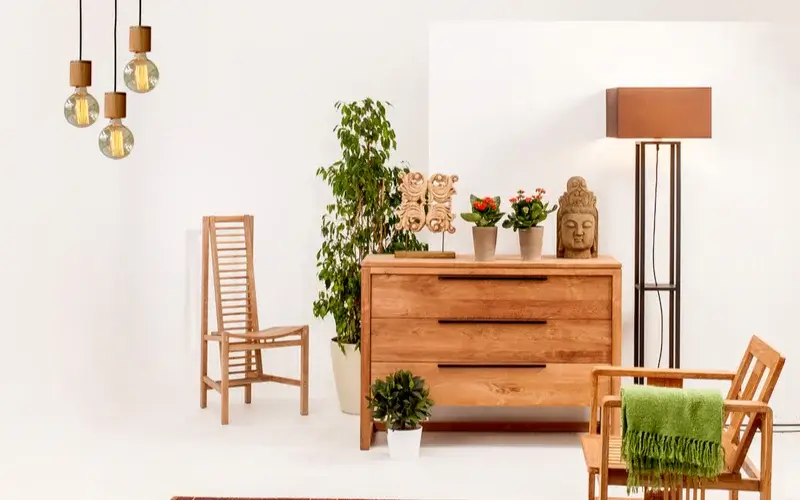In a world increasingly aware of its environmental footprint, sustainable living is more than just a trend—it’s a responsibility. One impactful way to embrace eco-conscious living is by rethinking how we furnish our homes. Sustainable furniture not only reduces environmental impact but also brings a unique, stylish character to your space. Whether you’re redesigning a room or simply replacing a piece or two, making eco-friendly choices can create a beautiful home that’s kind to the planet.
What Is Sustainable Furniture?
Sustainable furniture refers to pieces that are created with minimal negative impact on the environment. This can involve various factors—from the materials used, such as reclaimed wood or recycled metal, to the manufacturing process, packaging, transportation, and even the furniture’s end-of-life recyclability.
Eco-friendly furniture emphasizes durability and timeless design, which helps reduce waste over time. Instead of mass-produced, short-lifespan pieces, sustainable furniture promotes a “buy less, buy better” philosophy.
Why Choose Sustainable Furniture?
Environmental Impact
Traditional furniture production often involves deforestation, chemical treatments, and excessive carbon emissions. Sustainable furniture, on the other hand, minimizes harm by using responsibly sourced or recycled materials, low-VOC finishes, and ethical labor practices.
Healthier Indoor Air Quality
Eco-friendly furniture typically avoids toxic glues, paints, and finishes that can off-gas harmful chemicals. This leads to a healthier home environment, especially important for children, the elderly, or those with respiratory issues.
Unique Aesthetic Appeal
Sustainable furniture often showcases handcrafted detail, natural textures, and organic forms. Whether it’s a reclaimed wood dining table or a bamboo lounge chair, these pieces bring warmth and authenticity to your home.
Long-Term Savings
While sustainable pieces might cost more upfront, their durability means fewer replacements in the long run. Plus, many come with guarantees or warranties that reflect their high-quality craftsmanship.
Eco-Friendly Materials to Look For
When shopping for sustainable furniture, pay attention to the materials. Here are a few top eco-conscious choices:
Reclaimed Wood: Salvaged from old buildings, barns, or boats, reclaimed wood prevents unnecessary deforestation and adds a rustic, storied charm to furniture.
Bamboo: Technically a grass, bamboo grows quickly and regenerates naturally, making it one of the most sustainable materials available.
Recycled Metal and Plastic: These materials divert waste from landfills and reduce the need for virgin resource extraction.
Cork: Harvested from the bark of cork oak trees without harming them, cork is renewable, lightweight, and naturally anti-microbial.
Organic Upholstery: Look for cushions and textiles made with organic cotton, wool, or hemp dyed with natural, non-toxic colors.
Certifications to Guide You
When browsing sustainable furniture, third-party certifications can offer reassurance that a brand’s claims are legitimate. Look for:
FSC (Forest Stewardship Council): Ensures wood comes from responsibly managed forests.
Greenguard: Certifies products for low chemical emissions and healthier indoor air.
Cradle to Cradle Certified: Indicates that a product is designed for a circular lifecycle with safe, sustainable materials.
GOTS (Global Organic Textile Standard): Certifies organic fibers in upholstery and textiles.
Tips for Buying Sustainable Furniture
Choose Quality Over Quantity
Invest in fewer, well-made pieces instead of filling your home with disposable furniture. This minimalist approach supports sustainability and declutters your living space.
Buy Secondhand or Vintage
Shopping at antique stores, online marketplaces, or thrift shops extends the life of furniture and keeps it out of landfills. Vintage furniture often has character and durability that mass-market items can’t match.
Support Local Artisans
Purchasing from local craftsmen reduces the carbon footprint associated with global shipping and supports your local economy. Handmade pieces often have a personal touch and unique story.
Avoid Fast Furniture
Just like fast fashion, fast furniture is made quickly and cheaply, often with low-quality materials. These items tend to wear out fast, contributing to environmental waste.
Think Beyond the Label
A truly sustainable product considers the entire lifecycle—from sourcing and manufacturing to use and disposal. Ask questions about where the furniture comes from, how it’s made, and what happens to it when you’re done.
Stylish & Sustainable: A Perfect Match
Eco-conscious design has come a long way. Today’s sustainable furniture is not only kind to the environment but also incredibly stylish. You’ll find sleek Scandinavian-inspired minimalism, rustic farmhouse aesthetics, mid-century modern classics, and even bold contemporary designs made with recycled materials.
Sustainability doesn’t mean compromising on comfort or creativity. On the contrary, it invites you to be intentional and expressive with your choices, surrounding yourself with pieces that reflect your values and personal style.
Final Thoughts
Creating a stylish, sustainable home isn’t about perfection—it’s about progress. Every eco-friendly piece you choose helps shift the industry toward greener practices and sets a positive example for others.
As the demand for conscious living continues to grow, the options for sustainable furniture Dubai become more diverse, accessible, and design-forward. Whether you’re furnishing a new home or simply updating a single room, now is the perfect time to make thoughtful, stylish, and planet-friendly choices.

